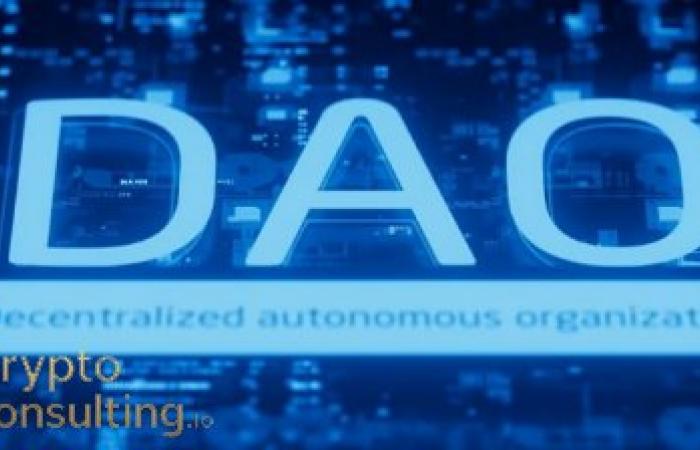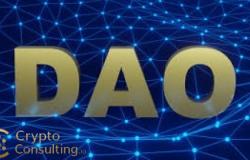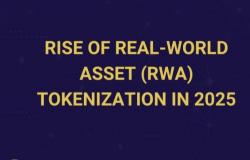
Decentralized Autonomous Organizations have achieved remarkable growth and legitimacy in 2025, collectively managing treasuries exceeding $28 billion while pioneering new models of governance, coordination, and decision-making. DAOs represent one of the most ambitious applications of blockchain technology—creating organizations that operate through smart contracts rather than traditional hierarchies, distribute authority through token-based voting rather than centralized control, and coordinate globally dispersed participants through transparent on-chain governance. The maturation of DAO infrastructure, emergence of legal frameworks recognizing DAO structures, and demonstrated success of major DAOs in managing substantial resources have positioned decentralized governance as a viable alternative to traditional corporate forms. Understanding DAOs is essential for grasping how blockchain technology could reshape organizational structures across industries.
The $28 billion in DAO treasuries represents substantial capital under decentralized control, exceeding the assets under management of many traditional investment funds. These treasuries fund protocol development, provide liquidity incentives, invest in ecosystem projects, and support community initiatives. The scale demonstrates that decentralized governance can operate successfully at levels that matter economically. Major DAOs including MakerDAO, Uniswap, Compound, Aave, and others manage multi-billion dollar treasuries through community votes, with no single entity exercising unilateral control. This distributed power represents a fundamental departure from traditional corporate governance where executives and boards make decisions.
Governance Models and Voting Mechanisms

DAO governance typically operates through token-based voting where holders of governance tokens propose and vote on changes. This plutocratic model where voting power correlates with token holdings resembles shareholder governance in corporations but enables more direct participation. Rather than electing boards who make decisions, token holders directly vote on protocol parameters, treasury allocations, and strategic initiatives. The transparency of on-chain voting enables any stakeholder to verify that governance decisions reflect actual token holder preferences.
Delegation systems have emerged to address low voter turnout challenges. Many token holders lack time or expertise to evaluate every proposal, resulting in low participation rates that could enable small minorities to control governance. Delegation enables token holders to assign their voting power to more active participants who vote on their behalf. These delegates function similarly to representatives in democratic systems, concentrating voting power among engaged community members while maintaining accountability through the ability to change delegation at any time. Major protocols including Compound, Uniswap, and Optimism have implemented delegation systems that substantially increased effective participation.
Quadratic voting and alternative mechanisms aim to reduce plutocratic tendencies where large holders dominate decisions. Quadratic voting makes additional votes increasingly expensive, enabling better representation of diverse preferences. Conviction voting requires voters to lock tokens for extended periods to demonstrate commitment, preventing last-minute manipulation. Time-weighted voting gives more influence to long-term holders demonstrating sustained commitment. These alternative mechanisms remain experimental but show promise for creating more equitable governance.
Multi-signature controls and timelock mechanisms provide security safeguards preventing governance attacks. Even after successful votes, implementations often require multi-sig approval from trusted community members and delay periods allowing stakeholders to react if malicious proposals pass. These safeguards balance the efficiency of decentralized voting with protection against governance exploits where attackers accumulate tokens, pass harmful proposals, and execute them before the community can respond.
Major DAO Case Studies and Success Stories
MakerDAO, the decentralized organization governing the DAI stablecoin, represents one of the most successful and long-running DAOs. Managing over $8 billion in collateral and issuing $12 billion in DAI stablecoin, MakerDAO makes critical decisions about collateral types, stability fees, and risk parameters through decentralized governance. Thousands of MKR token holders participate in governance either directly or through delegation. The organization has successfully navigated the 2020 Black Thursday crash, implemented multi-collateral DAI, and expanded into real-world assets, demonstrating that decentralized governance can manage complex financial systems.
Uniswap DAO controls the most successful decentralized exchange with over $4 billion in liquidity and billions in daily volume. UNI token holders govern protocol fee switches, treasury allocations, and ecosystem grants. The Uniswap Grants Program, funded by DAO treasury and managed through decentralized decisions, has distributed over $60 million to projects building Uniswap ecosystem infrastructure. This demonstrates that DAOs can effectively allocate capital to support strategic objectives.
Lido DAO governs the largest liquid staking protocol, managing over $18 billion in staked ETH. Decentralized governance selects node operators, sets fees, manages treasury funds, and makes protocol upgrade decisions. The organization's success in managing such substantial assets while maintaining security and decentralization demonstrates DAO viability for mission-critical financial infrastructure.
Gitcoin DAO pioneered quadratic funding for public goods, distributing over $72 million to open-source developers and community projects. The organization transitioned from company to DAO, demonstrating how traditional organizations can evolve toward decentralized governance. Gitcoin's success in coordinating community funding for public goods showcases DAO potential for impact beyond pure profit motives.
Legal Recognition and Regulatory Frameworks
Legal status for DAOs has progressed substantially as jurisdictions develop frameworks recognizing decentralized organizations. Wyoming pioneered DAO-specific legislation enabling DAOs to register as limited liability companies with legal personality, capacity to contract, and liability protection for members. Several other U.S. states have followed with similar legislation. These legal structures bridge decentralized governance with traditional legal systems, enabling DAOs to enter contracts, own property, and participate in conventional business while maintaining decentralized control.
The Marshall Islands and Switzerland have established legal frameworks for DAOs providing offshore alternatives to U.S. registration. These jurisdictions offer favorable taxation, privacy protections, and flexible governance requirements appealing to international DAOs. The availability of multiple legal domiciles enables DAOs to select jurisdictions matching their governance philosophy and operational requirements.
Regulatory uncertainty persists in many jurisdictions about whether DAO tokens constitute securities subject to registration requirements. The SEC has taken positions that many governance tokens qualify as securities when sold to fund protocol development or when tokenholders expect profits from others' efforts. This uncertainty creates legal risk for DAOs and has encouraged some projects to restrict U.S. participation or implement geographic restrictions. Clearer regulatory frameworks defining when governance tokens are securities remain a policy priority.
Taxation of DAOs and their token holders raises complex questions. Is the DAO itself a taxable entity, or are only individual token holders taxed? When do governance token airdrops trigger tax obligations? How should contributors be classified for tax purposes? These questions lack definitive answers in most jurisdictions, creating compliance challenges for DAOs attempting to operate lawfully.
DAO Treasuries and Financial Management
DAO treasury management has evolved from simple token holdings to sophisticated portfolios including stablecoins, yield-generating DeFi positions, NFTs, real-world assets, and strategic investments. Professional treasury management practices including diversification, yield optimization, and risk management have been adopted from traditional finance and adapted for DAOs. Some DAOs employ specialized service providers for treasury management, while others rely on community committees with specific mandates.
Yield generation on treasury assets enables DAOs to fund operations from investment returns rather than token sales. By deploying treasury assets into lending protocols, liquidity pools, and staking, DAOs generate passive income covering development costs, grants, and operations. This financial sustainability reduces pressure to monetize through token sales that could compromise decentralization.
Venture investing by DAOs represents an emerging trend where treasuries function as decentralized venture capital funds. DAOs invest in early-stage projects aligned with their ecosystem, supporting growth while potentially generating returns. These DAO venture activities compete directly with traditional VCs while offering more transparent processes and community alignment. Several DAOs have generated substantial returns from strategic investments, validating the model.
Diversification strategies address risk concentration in native protocol tokens. DAOs often hold majority of assets in their own tokens, creating problematic correlation where treasury value collapses if the token declines. Progressive DAOs diversify into stablecoins, Ethereum, Bitcoin, and other assets, trading some upside potential for stability and reduced correlation. This diversification debate reflects tensions between maximizing alignment through native token holdings versus prudent risk management.
Operational Challenges and Solutions
Decision-making speed represents a persistent challenge for DAOs. Decentralized governance with proposal periods, voting, and implementation delays cannot match the agility of traditional organizations with empowered executives. Many DAOs address this through hybrid models where routine operational decisions are delegated to elected committees or specialized sub-DAOs, while major strategic decisions require full governance votes. This delegation balances efficiency with decentralization.
Contributor coordination and compensation in DAOs occurs differently than traditional employment. DAOs typically use bounty systems, grants, and retainers rather than traditional salaries. Contributors work flexibly across multiple DAOs rather than exclusively for one organization. This fluid labor model enables global talent access and flexibility but complicates coordination and creates challenges in building lasting institutional knowledge.
Governance attack vectors threaten DAO security. Wealthy actors could accumulate governance tokens, pass malicious proposals, drain treasuries, or alter protocol behavior harmfully. Defenses include vesting periods for large token holders, time delays before proposal execution, and multi-sig controls requiring trusted parties to approve changes. Despite these protections, governance attacks remain possible and have occurred on smaller DAOs.
Future Evolution and Trends
DAO tooling continues improving with better voting interfaces, proposal templates, delegation platforms, and governance analytics. Platforms including Snapshot, Tally, and Boardroom provide comprehensive governance infrastructure that reduces participation friction. These tools make DAO governance more accessible to non-technical participants and provide transparency into voting patterns and delegate activity.
SubDAOs and hierarchical governance structures enable specialized decision-making within larger DAOs. Rather than entire membership voting on every detail, specialized committees or subDAOs handle specific domains like grants, treasury management, or technical parameters. This specialization improves decision quality and efficiency while maintaining overall community control through the ability to override subDAO decisions.
AI-assisted governance represents an emerging frontier where artificial intelligence could help analyze proposals, predict outcomes, and synthesize community preferences. While controversial, AI tools could improve governance quality by processing information beyond human capacity and identifying optimal solutions to complex problems. The integration of AI with decentralized governance remains experimental but holds substantial potential.
Conclusion
DAOs have progressed from experimental governance mechanisms to viable organizational structures managing billions in assets and coordinating thousands of participants globally. The $28 billion in DAO treasuries, legal recognition in multiple jurisdictions, and demonstrated success of major protocols governed through decentralized decision-making validate the DAO model. While challenges remain including decision speed, voter participation, legal uncertainty, and security risks, continuous improvement in governance tools and processes addresses these limitations. As blockchain technology continues integrating with traditional systems, DAOs are positioned to influence how organizations coordinate, make decisions, and distribute power across diverse industries and applications.





